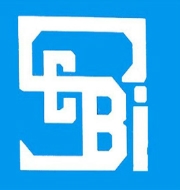SEBI eases algorithm trade rules in commodity exchanges
The Securities Exchange Board of India (SEBI) has relaxed algorithm trading norms at commodity derivatives exchanges. The market regulator has raised limit of trading using algorithm trading process up to 100 orders per second by user from the existing limit of 20 orders per second.
Key Facts
The decision was taken after receiving representations from exchanges along with views of SEBI’s subcommittee- Commodity Derivatives Advisory Committee. SEBI has asked exchanges to ensure that limit provided by it is subject to its ability to handle load. Besides, it also has decided to do away with requirement of empanelment of system auditors by the exchanges for system audit of algorithmic trading.
Algorithmic trading
Algorithmic trading in financial markets refers to transaction orders generated by using advanced mathematical models that involves automated execution of trade. It uses mathematical models and software codes to make transaction decisions on exchanges and execute them at high speed.
This technology-driven trading enables traders to take advantage of any profit making opportunities arising in the market much before a human trader can even spot them. It was introduced in India in 2009. At present, on National Stock Exchange (NSE), algorithm trades accounts close to 16% of all trades. On the Bombay Stock Exchange (BSE), it was 8.56% in January 2017.
Difference between algo trading and high frequency trading (HFT)
Both are often used inter-changeably, but they are not really same. HFT refers to high-volume orders executed within split-seconds to make immediate gains from market opportunities. HFT trading are often backed by algo trading, which spot trading opportunity.
Month: Current Affairs - April, 2018


